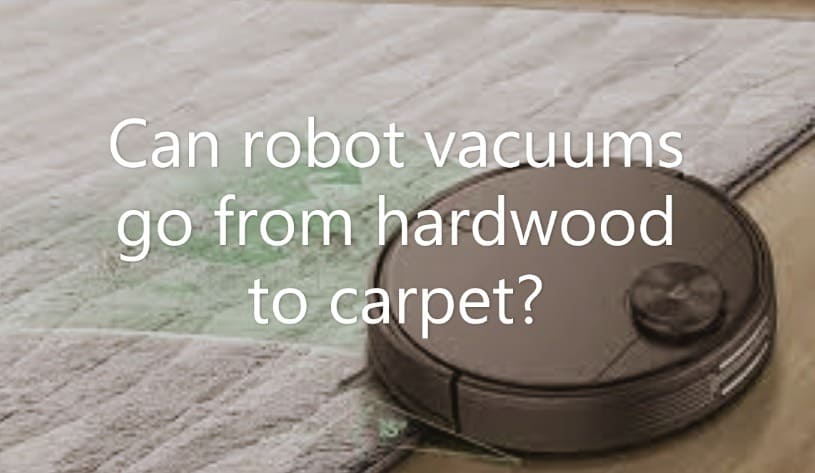Table of contents

Keeping our floors clean is a never-ending task, but thanks to advancements in technology, robot vacuums have become popular household devices that can help alleviate this chore. However, a common question that arises is whether these automated machines can effectively navigate the transition from hardwood floors to carpets. In this article, we will delve into the capabilities and features of robot vacuums to determine their ability to seamlessly clean both hardwood and carpeted surfaces.
Understanding Robot Vacuum Technology
To comprehend a robot vacuum’s ability to transition between different floor types, it is essential to explore the underlying technology that powers these devices. Robot vacuums are equipped with various features and functionalities designed to optimize their cleaning performance on different surfaces.
Sensors:
Robot vacuums are equipped with a range of sensors that detect obstacles, edges, and changes in surface elevation. These sensors play a crucial role in helping the robot vacuum navigate through your home and adjust its cleaning behavior as needed.
Brush Rollers:
Most robot vacuums have one or more brush rollers that sweep and agitate the floor surface. These brush rollers are designed to effectively pick up dirt, debris, and pet hair from different types of flooring, including hardwood and carpet.
Suction Power:
The suction power of a robot vacuum determines its cleaning efficiency. Modern robot vacuums often feature adjustable suction settings that allow them to adapt to different floor types, including carpets, by increasing the suction power to effectively remove dirt and dust from deep within carpet fibers.
Climbing Abilities:
Some robot vacuums are designed with the ability to climb low-pile or medium-pile carpets, ensuring that they can traverse the transition from hardwood to carpeted areas without getting stuck.
Transitioning from Hardwood to Carpet
Robot vacuums are specifically engineered to handle the transition from hardwood to carpet without any issues. Here’s how they achieve this:
- Height Adjustment: Many robot vacuums come with automatic height adjustment capabilities. When a robot vacuum approaches a carpeted area, its sensors detect the change in surface elevation and prompt the device to adjust its height accordingly. This feature ensures that the vacuum’s brush rollers make proper contact with the carpet, allowing for effective cleaning.
- Brush Rollers: Robot vacuums employ brush rollers that can efficiently clean both hardwood and carpeted surfaces. These brush rollers are often designed with bristles of varying stiffness to cater to different floor types. When transitioning from hardwood to carpet, the brush rollers agitate the carpet fibers, dislodging dirt and debris for effective suction and cleaning.
- Increased Suction Power: To tackle the cleaning challenges posed by carpets, many robot vacuums automatically increase their suction power when they detect a carpeted surface. This enhanced suction helps to extract embedded dirt and debris from within the carpet fibers, providing a thorough clean.
- Carpet Detection: Some advanced robot vacuums feature intelligent carpet detection technology. These devices use sensors to identify carpeted areas and adjust their cleaning behavior accordingly. When a robot vacuum detects a carpet, it may activate a specific cleaning mode optimized for carpeted surfaces, ensuring thorough and efficient cleaning.
Maintenance Considerations
While robot vacuums are designed to transition smoothly from hardwood to carpet, there are a few maintenance considerations to keep in mind:
- Carpet Height and Pile: The success of a robot vacuum’s transition from hardwood to carpet can be influenced by the height and pile of the carpet. High-pile or shaggy carpets may pose challenges for some robot vacuums due to their increased resistance. It is advisable to check the manufacturer’s recommendations to ensure compatibility with your specific carpet type.
- Regular Maintenance: To ensure optimal performance, it is crucial to maintain your robot vacuum regularly. This includes cleaning or replacing brush rollers, emptying the dustbin, and checking for any tangled hair or debris that may hinder the vacuum’s ability to transition smoothly between floor types.
Conclusion
In conclusion, robot vacuums are designed to effortlessly transition from hardwood to carpeted surfaces, providing efficient and effective cleaning. Through their sophisticated sensors, adjustable brush rollers, and varying suction power, these automated devices adapt to the different demands of various floor types. Whether it’s the detection of carpeted areas, adjusting height, or increasing suction power, robot vacuums are equipped with the necessary features to seamlessly clean both hardwood and carpeted floors.
It is worth noting that the success of a robot vacuum’s transition depends on factors such as carpet height, pile, and the specific model’s capabilities. Therefore, it is advisable to choose a robot vacuum that is compatible with your flooring needs and follow the manufacturer’s guidelines for optimal performance. With the right robot vacuum and proper maintenance, you can enjoy the convenience of automated cleaning on both hardwood and carpeted surfaces, keeping your home tidy with minimal effort.
